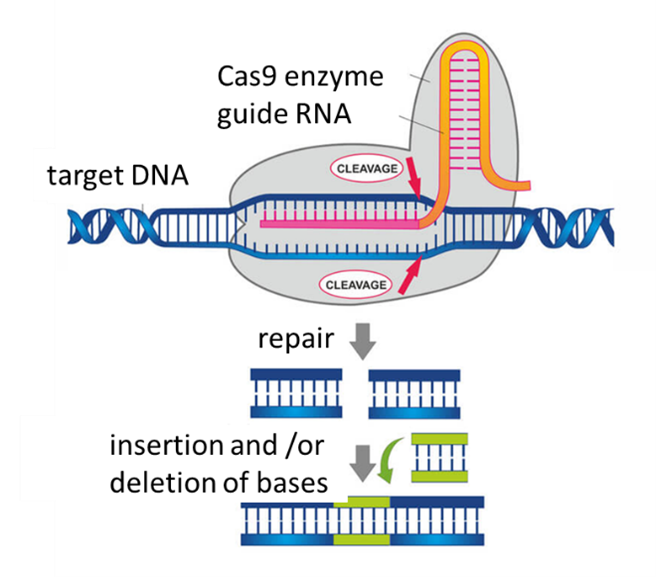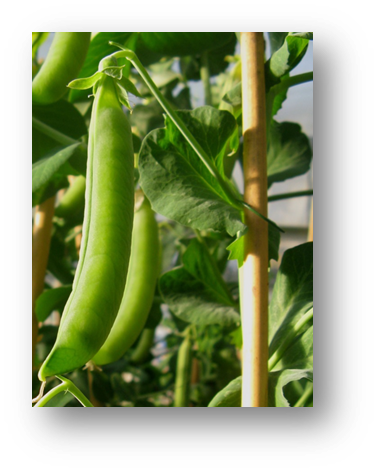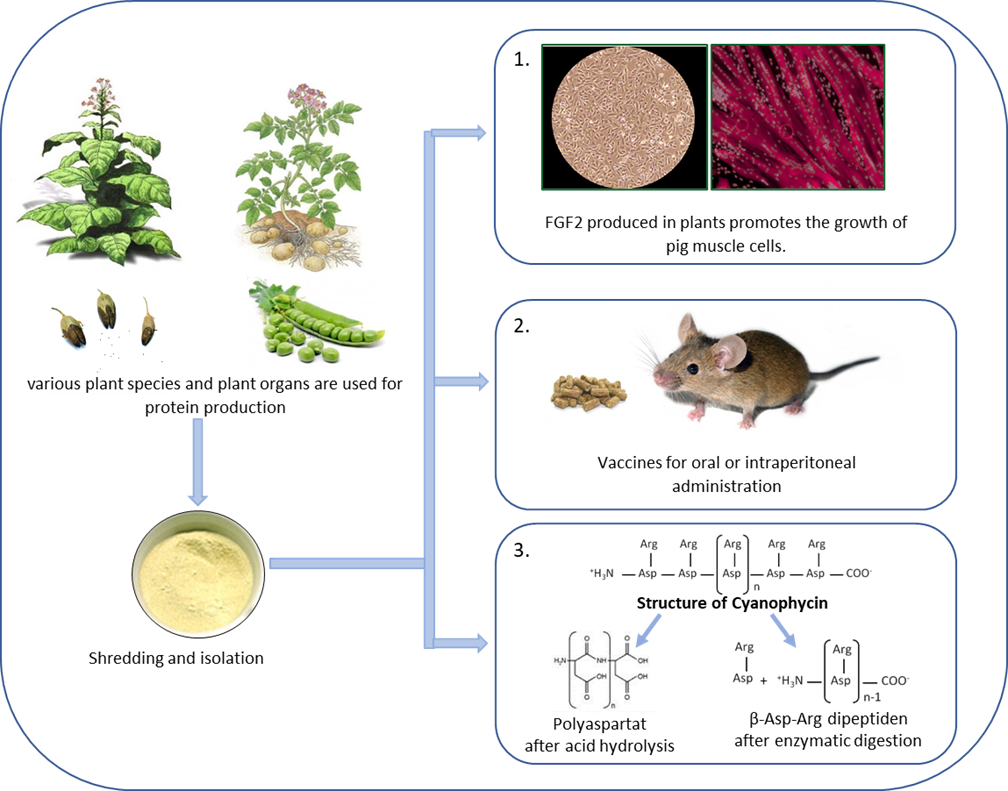Research
Use of CRISPR/Cas in plant breeding
Genetic scissors have become very important in plant breeding in recent years and has already been in many crop species. In our research, we explore the potential of this technology in lesser-studied crops, such as peas.
We currently working on reduction of raffinose family oligosaccharides (RFO) in pea. The RFOs include raffinose, stachyose and verbascose. These sugars are almost undigested in the small intestine because the α-galactoside bond cannot be broken down by the digestive enzymes of monogastric animals. Legumes in particular can contain high levels of raffinose oligosaccharides. If you add local legumes such as pea to pig feed, high concentrations of RFO can lead to problems and poorer feed conversion. In order to implement more legumes in animal diets, the reduction of RFO content can be achieved by targeted mutation of the raffinose synthase gene using CRISPR/Cas. For this purpose, the raffinose synthase was specifically mutated in pea. Further studies will show whether this mutation has a reducing effect on the RFO content of peas. In addition, possible negative effects on plant development due to reduced RFO content need to be investigated.
Plants as an alternative production platform for proteins - “Plant Made Pharmaceuticals and Industrials”
Plants are ideal for producing proteins and have significant advantages compared to animal cell culture systems, such as less processing effort with lower costs, sometimes a stronger immune response to plant-produced vaccines, and no risk of contamination with human pathogens. Moreover, unlike bacteria, plants have ability to perform necessary posttranslational modifications of proteins. In addition, some of the plant-produced proteins can be stored for a long time, without refrigeration, in tissues such as seeds. Oral administration of plants is also possible, which can eliminate the cost of purification or processing of products.
1. Production of various growth regulators for animal cell culture
Animal cell cultures grow in complex media and are required in many areas of medicine, pharmacy and also for meat production from cell cultures. Fetal calf serum (FKS) forms the basis of common cell culture media because it contains a variety of different proteins and growth regulators. In addition to the ethical problems, the main disadvantages are the imparity between the batches and the contamination with animal/human pathogens.
In collaboration with the startup Innocent Meat, we produce selected proteins and growth regulators of animal cell culture in plants in order to be able to provide FKS-free cell culture media in the future. Production initially takes place transiently in Nicotiana benthamiana. In this system, we test the basic feasibility and also make a preselection for a suitable production compartment. The stable expression can then take place in different plants such as pea or potato.
2. Development of vaccines to control rodents
The control of rodent pests is an ongoing and complex problem. Rodent pests can cause great losses in agriculture both in the pre-harvest and post-harvest stages, livestock production, and food production. On the one hand, rodents have a high reproductive rate and on the other hand, established control methods become ineffective due to the rodents' resistance to conventional poisons, or their avoidance of traps because of their intelligence. Therefore, management should always consist of several strategies.
One strategy is to reduce the fertility of rodents by triggering an autoimmune response against the body's own proteins in the reproductive organs, known as immunocontraception. Potential targets are zona pellucida proteins and certain sperm proteins. In plants, these proteins can be produced in appropriate quantities, isolated and used as immunocontraceptive vaccines with an appropriate formulation. In order to be able to perform specific action against selected species such as rats or mice, only certain parts of the proteins, which are species-specific, are used. They can be produced in edible plant parts and administered orally.
3. Cyanophycin - a biopolymer made in plants with a wide range of applications
Cyanophycin (CGP) is a biopolymer consisting of an aspartate chain and arginine side chains. It is produced naturally in many species of cyanobacteria as a storage protein. CGP is an interesting molecule in many ways. It is not immunogenic and due to its strong negative charge it has an antibacterial effect. After acid hydrolysis, it can be used as polyaspartate as a starting material for various biopolymers, and after cleavage into dipeptides, it is considered as animal feed. The cyanobacteria only need a single protein for production of cyanophycin, cyanophycin synthetase, which links the aspartate-arginine dipeptides to form long chains.
We introduced the cyanophycin synthetase into various plants species. The plants were able to produce cyanophycin up to 10% of dry matter. Different tobacco varieties are currently being evaluated for suitability for cyanophycin production and release experiments are being evaluated to determine the feasibility and economic viability of this production.



